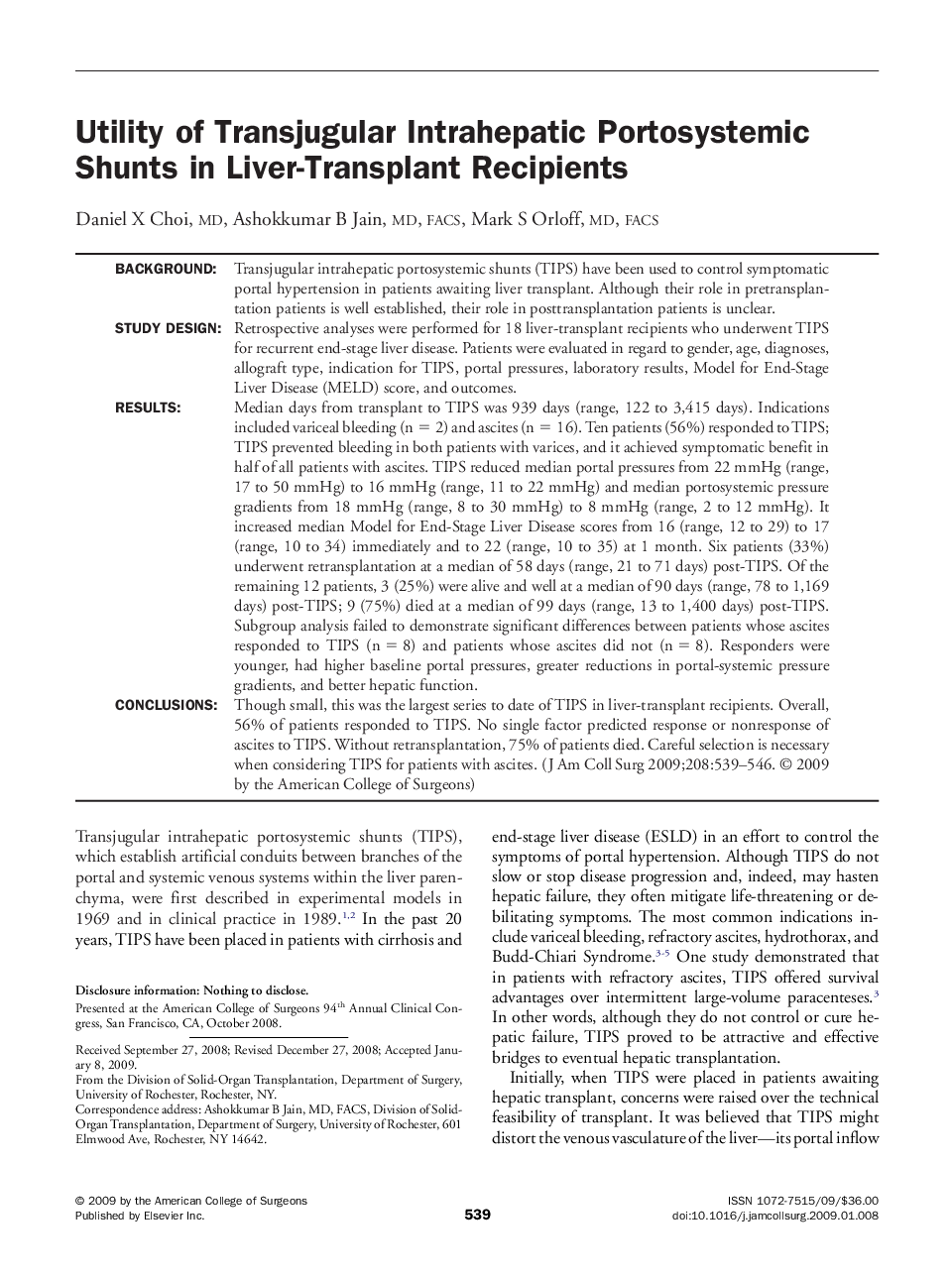| Article ID | Journal | Published Year | Pages | File Type |
|---|---|---|---|---|
| 4295469 | Journal of the American College of Surgeons | 2009 | 8 Pages |
BackgroundTransjugular intrahepatic portosystemic shunts (TIPS) have been used to control symptomatic portal hypertension in patients awaiting liver transplant. Although their role in pretransplantation patients is well established, their role in posttransplantation patients is unclear.Study DesignRetrospective analyses were performed for 18 liver-transplant recipients who underwent TIPS for recurrent end-stage liver disease. Patients were evaluated in regard to gender, age, diagnoses, allograft type, indication for TIPS, portal pressures, laboratory results, Model for End-Stage Liver Disease (MELD) score, and outcomes.ResultsMedian days from transplant to TIPS was 939 days (range, 122 to 3,415 days). Indications included variceal bleeding (n = 2) and ascites (n = 16). Ten patients (56%) responded to TIPS; TIPS prevented bleeding in both patients with varices, and it achieved symptomatic benefit in half of all patients with ascites. TIPS reduced median portal pressures from 22 mmHg (range, 17 to 50 mmHg) to 16 mmHg (range, 11 to 22 mmHg) and median portosystemic pressure gradients from 18 mmHg (range, 8 to 30 mmHg) to 8 mmHg (range, 2 to 12 mmHg). It increased median Model for End-Stage Liver Disease scores from 16 (range, 12 to 29) to 17 (range, 10 to 34) immediately and to 22 (range, 10 to 35) at 1 month. Six patients (33%) underwent retransplantation at a median of 58 days (range, 21 to 71 days) post-TIPS. Of the remaining 12 patients, 3 (25%) were alive and well at a median of 90 days (range, 78 to 1,169 days) post-TIPS; 9 (75%) died at a median of 99 days (range, 13 to 1,400 days) post-TIPS. Subgroup analysis failed to demonstrate significant differences between patients whose ascites responded to TIPS (n = 8) and patients whose ascites did not (n = 8). Responders were younger, had higher baseline portal pressures, greater reductions in portal-systemic pressure gradients, and better hepatic function.ConclusionsThough small, this was the largest series to date of TIPS in liver-transplant recipients. Overall, 56% of patients responded to TIPS. No single factor predicted response or nonresponse of ascites to TIPS. Without retransplantation, 75% of patients died. Careful selection is necessary when considering TIPS for patients with ascites.
